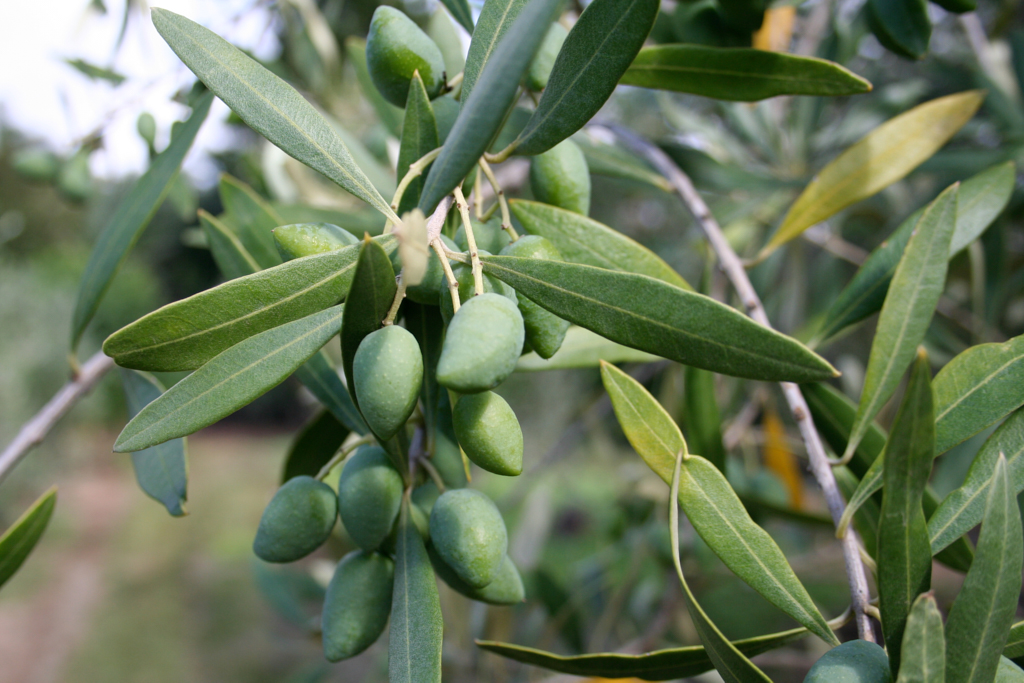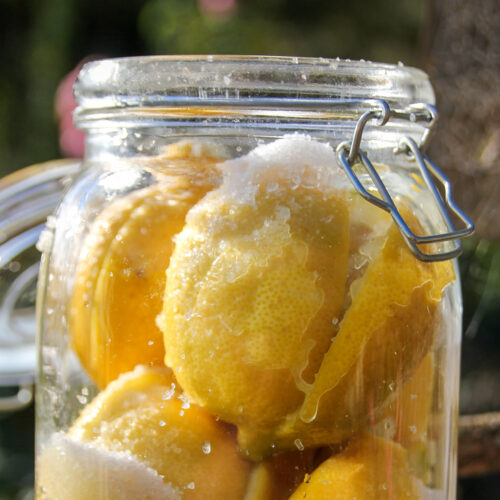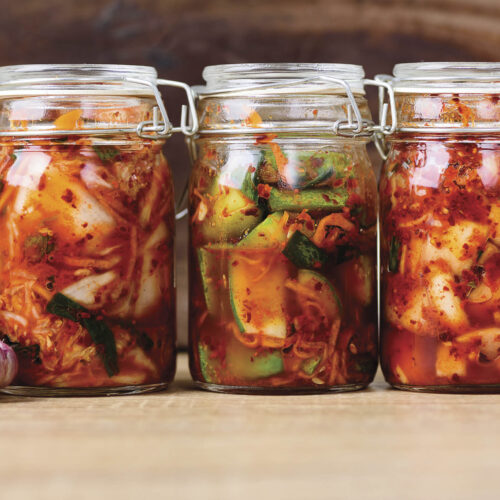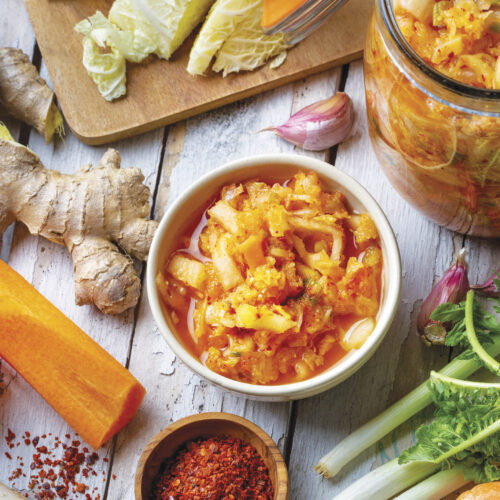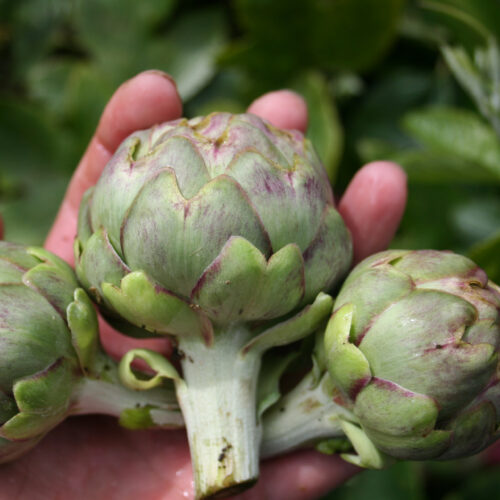Olive harvesting and preserving
2019-03-12T00:32:35+11:00
Time to think about harvesting and preserving olives, writes Penny Woodward.
We are coming into olive harvesting season, which can go from late March right through to September depending on your climate and the cultivar you are growing. So how do you know when to harvest and what’s the best way to treat them?
Olives (Olea europaea) are natives of the Mediterranean, parts of Asia and Africa and have been in cultivation for thousands of years. There is archeological evidence that olives were grown in Crete as early as 3500 BC, the Greeks believed they were sacred their goddess Athena and there are numerous references to olives in the Bible. Even today an olive branch is a symbol of peace and plenty. Olives are some of the oldest living trees in Europe with a few believed to be well over 1,000 years old.
Olives typically do best in ‘Mediterranean’ climates with long, hot dry summers with low humidity and winter rain and cold. If there is not enough chilling in winter then there will not be as many flowers and so less fruit.
Production and harvesting
Trees grown from cuttings or ones that are grafted will produce olives in the first three years and will go on producing for decades (if not hundreds of years) afterwards. Ultimately a good-sized tree can yield up to 40kg.
Fruit takes from 6 to 8 months to ripen with some table olives being harvested while still green while olives like Kalamata are left until they are black and fully ripe. Olives on the same tree ripen at different times so olives for oil are generally harvested when the majority are turning from yellow to brown. There will be some still green and some black.
Olives for eating are harvested either green, or when they are fully black. Don’t bruise the olives while harvesting as this will spoil the quality of the end product. If you have only a few trees then these can be easily hand harvested. Olives fruit on one year old wood so if you cut out the growing tips it will take two years to produce fruit on the new side shoots. Prune after harvesting.
Problem weeds?
Olives may be beloved of the Gods but they also represent an invasive weed threat in many parts of Australia. In South Australia, where they were planted by early settlers, they are a declared noxious weed with native birds eating the fruit from neglected orchards and carrying the seed into bushland. As olives are being planted in huge numbers in other states the same problems are beginning to occur there as well. If you don’t want to create a weed problem, then harvest every olive to stop trees going feral. If you are not going to harvest, then pull the tree out. In our now more fragile world we don’t want to make it even harder for indigenous flora and fauna to cope.
Processing
My olives are Kalamata, and perfect for processing, bottling and eating. I love black olives so always leave them on the tree until they are black. If birds discover them then you will need to net the tree. My favourite and one of the simplest recipes comes from Lina Siciliano and is from the lovely book about a year in their garden called Growing Honest Food, by Gabriella Gomersall-Hubbard.
Lina’s Olives in Brine
Ingredients
5kg of fresh olives (green or black), water, 500g salt, lemon, garlic, green chilli, oregano
Method
Place the olives into a large container and fill with fresh water until the olives are covered. Change the water every day, for 10-12 days.
Drain the olives and place them in layers in an airtight container with lots of oregano, thickly sliced lemon, garlic to taste and sliced firm green chilli. Continue the layers until the container is full. Boil 5L of water with 500g of salt and leave to cool. Pour the salted water over the olives etc until they are well covered. Seal the container. Store in a cool place and keep the container sealed for 6-8 weeks for black olives, and 8-10 weeks for green olives. Open and taste, if the olives are still bitter, leave the to cure for another week or so and test again.
Olive choices
The following table first appeared in OG 115 in a feature written by Penny Woodward about growing olives:
|
NAME |
POLLINATORS |
GROWN FOR FRUIT/OIL |
NOTES |
|
‘Arbequina’ |
Self-fertile but will cross-pollinate with ‘Frantoio’. |
Early season. Mainly for oil. Good for fruit, too. Harvested green for pickling. |
Small trees to 4–5m. Adaptable to a wide range of climates. |
|
‘Coratina’ |
Better with cross pollination with ‘Frantoio’ and ‘Picual’. |
Early season. Oil and fruit. Pick either green or black for pickling. |
High yielding. Adaptable to a wide range of climates. Erect habit. Trees to 8m. |
|
‘Correggiola’ |
Partly self-fertile but more fruit if ‘Coratina’ also grown. |
Late season. Oil and fruit. Pick either green or black for pickling. |
Old Tuscan cultivar. Peppery oil, cold-tolerant trees. Good for hedges, screening. Trees to 8m. |
|
‘Frantoio’ |
Self-fertile and known as a universal pollinator. |
Late season. Mainly for oil but also fruit. |
Aromatic peppery oil, nutty fruit. Trees to 8m. Cold tolerant. |
|
‘Kalamata’ |
Self-fertile but more fruit if ‘Frantoio’ also grown. |
Fruit. Large, torpedo shaped, harvested black. Also used for oil. |
Juicy, sweet, good for cooking and eating. Trees to 8m |
|
‘Manzanillo’ |
Self-fertile but more fruit if ‘Arbequina’ or ‘Frantoio’ also grown. |
Oil and fruit. Pick either green or black for pickling. |
Spanish cultivar, true dual use, trees to 5m. Low chill requirement, cold sensitive. |
|
‘Picual’ |
Self-fertile but more fruit if ‘Arbequina’ also grown. |
Fruit. Mid season, pick when fully ripe and black. Also oil. |
Spanish cultivar. Good for cold regions through to subtropical. Trees to 6m. |
|
‘Verdale’ |
Higher bearing with cross-pollination with ‘Frantoio’. |
Fruit and oil, but lower oil content than some others. |
Good for cold regions. Trees to 8m. |

